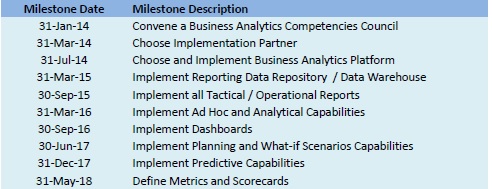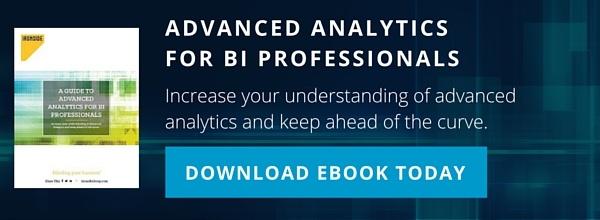The Business Intelligence Maturity Model
Much has been written recently about the value of transforming data into useful information for decision making. It has become a strategic must-have for organizations to figure out how to use the structured historical data they already own, make sense of the ever-expanding amount of unstructured social media data out there, and implement the appropriate analytics platform to use these assets to their fullest extent through developing business intelligence maturity.
Consider the following scenario. Imagine two different organizations competing in the same industry, both roughly the same size. Organization A chooses to continue with the same simple reporting approach they have been using for years. They justify this choice with one of the standard excuses, such as citing budget restraints, arguing that their reports are simple, and stating that their reports have changed very little over the years. These arguments are sure signs that the organization will continue to react to market changes rather than capitalize on them through the strategic use of data.
Organization B, on the other hand, takes a different approach. They decide that their ideal end state is to use data strategically, to implement and instill a culture that is guided by clearly defined performance management principles, and to be able to own the “bragging rights” amongst peers as it pertains to its use of data and business intelligence maturity. They begin by developing a Strategic Business Analytics Maturity plan along with a corresponding timeline, resembling the one below. They then identify the people, processes, policies, procedures, and technologies that they will need to get them to each milestone and attach goal-specific project plans to the different parts of the larger endeavor.
Now, follow the two different organizations described above into the future, beyond the year 2018. Organization A is still just using reporting and is continually affected by shifts in their industry as they scramble to keep pace with economic and competitive changes. Conversely, Organization B has achieved each milestone set by their Business Analytics Competency Council and is moving into a position of business intelligence maturity from which they can control what happens in their sector rather than the other way around. Which organization do you believe is better positioned to use data as a strategic asset, achieve their goals and implement new strategies, and perform better going forward? Based on the information given above, this question should be a no brainer.
Using the different modes of BI technology available, you can get your organization into a leadership position in your industry by utilizing the wealth of historical, social, and market data at your disposal. The powerful integrations available now between BI and statistical analysis tools bridge the gap between business intelligence and predictive analytics, allowing you to step out of the narrow hallway of reporting and into the expansive watchtower of a mature business analytics practice. From this location, you will command a view of your organization’s past, present, and future, and will be able to synthesize the three to produce actionable plans that vault your business forward. We in the Ironside Business Intelligence team look forward to helping you streamline your processes and make your data count.







